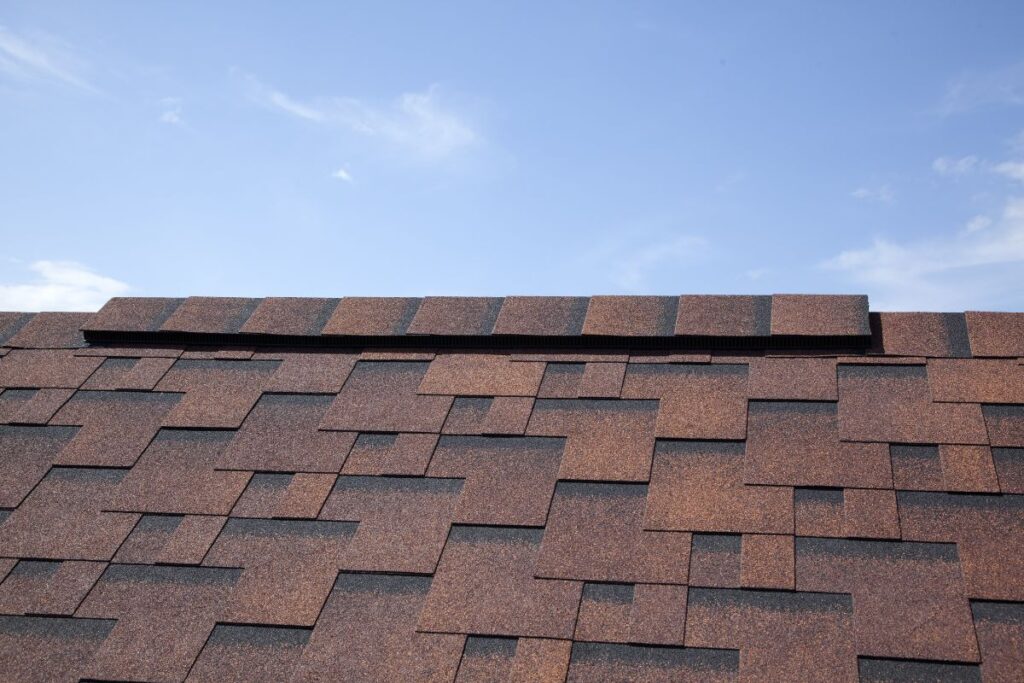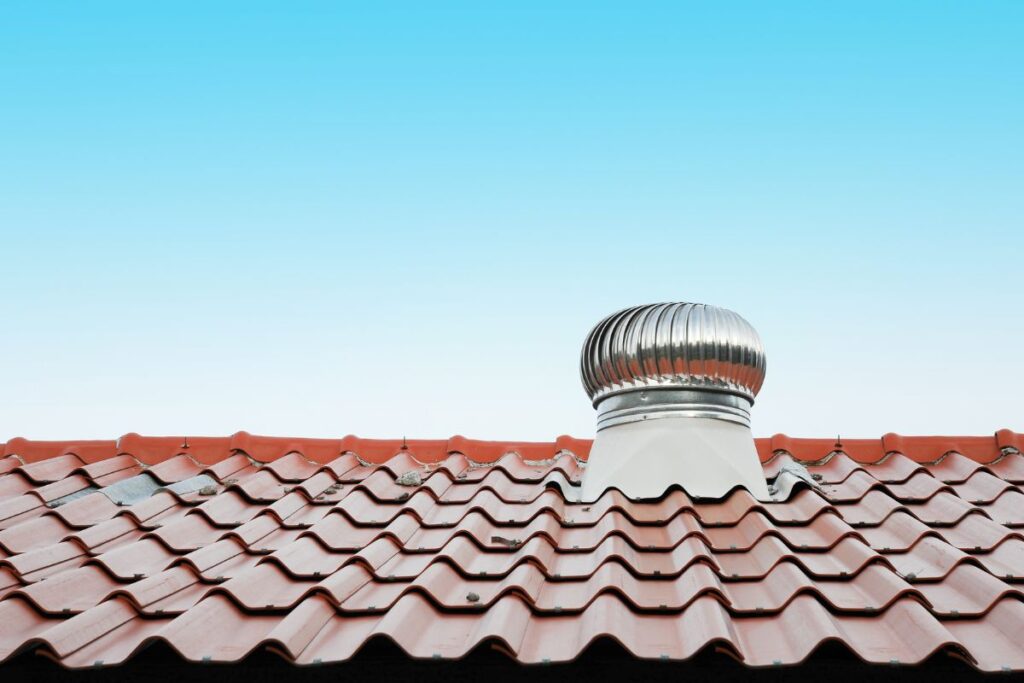Roof ventilation might not be the first thing that comes to mind. Most homeowners focus on the aesthetics and durability of their roofs, often overlooking the importance of proper ventilation. However, understanding the significance of roof ventilation is crucial for maintaining a healthy and functional roofing system. In this comprehensive guide, we’ll delve into why roof ventilation matters more than you think and explore the various types and methods available.
The Importance of Roof Ventilation In Your Home
Roof ventilation is a must for your roof’s durability and integrity. Proper roof ventilation not only provides indoor comfort but also provides peace of mind about your roof’s integrity. If your roof vents aren’t working for any reason, they can compromise your roof’s health.

1. Regulates The Temperature In Your Home
Roof ventilation is important for regulating the temperature in your home. Without the proper amount of roof ventilation, the temperature in your attic can reach extremes, making the interior temperature of your home feel suffocating, especially during hot summer months.
Adequate roof ventilation prevents the buildup of heat by allowing hot air to escape from the attic, keeping living spaces cooler and more comfortable. Additionally, it reduces the temperature extremes that can damage roofing materials and compromise their longevity.
2. Increases Your Home’s Energy Efficiency
Installing ventilation in your attic significantly impacts your home’s energy efficiency. By expelling the hot and moist air, roof ventilation reduces the strain on your HVAC system and leads to lower energy consumption, significantly reducing utility bills.
In addition, consistent temperature throughout your home improves indoor comfort. This results in less reliance on air conditioning during the summer and heating during the winter, ultimately saving you money on your energy bills.
3. Prevents Moisture Buildup And Mold Growth
Moisture buildup and condensation are the real problems in the attic, which can cause mold and algae growth, compromising the structural integrity of your roof. The damp conditions inside the attic provide the environment for mold to thrive and accelerate its growth, which can cause harm to homeowners.
If you notice signs of moisture buildup and water stains in your attic, check your attic ventilation. By improving the airflow within the attic, you can get rid of these future threats. Particularly, attic ventilation prevents condensation from forming on the underside of the roof, which can lead to water damage and structural issues over time.
5. Increases Your Roof’s Lifespan
Your roof’s lifespan is influenced by various factors, including the durability of the roofing materials, the structural integrity of the roof, the quality of ventilation, and any potential damage. Regular maintenance is crucial in every scenario.
However, roof ventilation has a direct effect on the longevity of your roof, and a lack of it can cause it to shorten. By minimizing temperature fluctuations and moisture buildup, adequate ventilation helps extend the lifespan of your roofing materials.
A well-ventilated roof is less prone to damage from heat, moisture, and weathering, resulting in fewer repairs and replacements over time. Proper ventilation also helps prevent the premature deterioration of roofing materials, such as shingles and underlayment, by reducing exposure to excessive heat and moisture.
Related: 9 Common Roof Vent Problems & Solutions Every Homeowner Should Know About
How Much Ventilation Is Required In Your Attic?
The amount of ventilation required in your attic depends on various factors, including the size of your home, climate conditions, and local building codes. As a general rule of thumb, experts recommend a balanced ventilation system that provides approximately 1 square foot of ventilation for every 150 square feet of attic space. However, it’s essential to consult with a roofing professional to determine your home’s specific ventilation needs and ensure compliance with local building codes and regulations.
Methods of Roof Ventilation
As you know now, proper roof ventilation is essential for maintaining a healthy and functional roofing system. There are several types of roof ventilation methods available, each with its own benefits and applications.
1. Active Ventilation
Active roof ventilation pulls the air out of the attic through mechanically or electronically powered vents that create a suction effect. These vents actively work in drawing the hot and moist air outside the attic and promote a balanced temperature. Some of the examples of active vents are as follows.
b) Power Vents: Power vents, also known as attic fans or roof ventilators, use electric motors to exhaust hot air from the attic. These fans effectively remove heat and moisture from the attic space, improving ventilation and reducing energy costs.

c) Turbine Roof Vents: Turbine vents harness wind power to create airflow and remove heat from the attic. As the wind blows, the turbine spins, drawing hot air out of the attic and promoting ventilation.
2. Passive Ventilation
Passive ventilation systems rely on natural airflow to ventilate the attic space. These systems do not require mechanical assistance and are often more cost-effective and environmentally friendly than active ventilation methods. Here are some common types of passive ventilation:
a) Box vents: Also known as static vents, box vents are installed on the roof and allow hot air to escape without the need for mechanical assistance. Box vents are simple and cost-effective solutions for improving roof ventilation and are suitable for homes with low to moderate ventilation requirements.

b) Ridge Vents: Installed along the peak of the roof, ridge vents allow hot air to escape naturally. These vents provide continuous ventilation along the entire length of the roof, promoting efficient airflow and temperature regulation.
c) Soffit Vents: Installed under the roof’s eaves, soffit vents allow cool air to enter the attic, promoting airflow and preventing moisture buildup. They work in conjunction with ridge vents to create a balanced ventilation system that maximizes airflow.
d) Gable Vents: Located on the gable ends of the attic, gable vents help exhaust hot air and promote cross-ventilation, improving overall airflow and ventilation efficiency. They are an excellent option for homes with limited roof space.
Final Thoughts
By regulating temperature, preventing moisture buildup, and extending the lifespan of your roof, proper ventilation offers numerous benefits for homeowners. Whether you opt for active or passive ventilation methods, investing in roof ventilation is a wise decision that can improve indoor comfort, energy efficiency, and the overall health of your home. So, don’t underestimate the importance of roof ventilation – it’s more critical than you may realize.
Contact Empire Roofing & Exteriors In Baton Rouge, LA, For Your Roofing Needs
Do you want to improve the quality of the roof ventilation in your home? Empire Roofing & Exteriors in Baton Rouge, LA, can help. Improve the quality of your roof ventilation and reduce the chance of future damage occurring. Inspect your roof today with our skilled roofers and check the current condition of your roof ventilation. Just give us a call today at (225) 347-8877 and talk to one of our experts regarding all your roofing needs.
